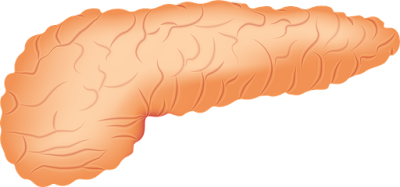Digestive enzymes benefits
Digestive enzymes
To carbohydrates, proteins and fats are absorbed must be decomposed with enzymes into simpler components. Amylase, protease, lipase, cellulase, and lactase, respectively decompose the starch, protein, fat, fiber and lactose.
Enzymes are, in addition to vitamins and hormones, biocatalysts, which regulate the course of our life processes. The three main nutrients: carbohydrates, proteins and fats can be learned only after they have been, with their help, spread into simpler components. Without digestive enzymes the body would be so badly nourished, because it could not absorb many nutrients.
The enzymes are secreted through the wall of the gastrointestinal tract and digestive organs such as salivary glands, stomach, pancreas or liver. You can also obtain them from raw food. However, the more processed diet, the less is there enzymes.
Growth in demand for digestive enzymes
The demand for digestive enzymes increased in the following situations:
- Over the years, as the production of enzymes decreases with age
- Stress resulting from sudden changes in the way food intake
- Exposure to environmental pollutants
- Changes in weather
- Frequent travels.
The main digestive enzymes
1. Amylase (starch).
Amylase is mainly produced by the pancreas and by the salivary glands, liver or muscles. Along with pancreatic juice, gets into the lumen of the gastrointestinal tract, where it is involved in the distribution of polysaccharides (starch, glycogen, amylopectin) into simple sugars. As a result, the formation of various products of hydrolysis as maltose, glucose, fructose or dextrin.
2. Protease (protein).
Proteases are a group of enzymes, which by cutting peptide bonds between amino acids, protein degradation. It leads to the disintegration on the free amino acids and dipeptides. Proteases are involved not only in the digestion and degradation but harmful proteins in the cell. That is why their malfunction can lead to lifestyle diseases like cancer, diabetes, hypertension or viral and bacterial infections.
3. Lipase (fats).
The lipase produced by the pancreas is inactive, that is not ready to digest. Only after a hit into the duodenum under the influence of bile acids, phospholipids, and colipase (protein), is converted to an active form. Then decomposed food triglycerides into glycerol and fatty acids.
4. Cellulase (fiber).
In the digestive tract of humans and many other mammals, there is no cellulases which break down the cellulose. Therefore, we can not digest fiber. Micro-organisms which produce the enzyme are present in the stomachs of ruminants and other pasture animals. That's why they use fiber as a significant source of energy. However, to release closed in dietary fibers of fruits and vegetables, nutrients, we can take cellulase in supplements.
5. Lactase (lactose).
Lactase is involved in the breakdown of lactose, the sugar that is present in the milk, into glucose and galactose. When the body lacks this enzyme, you may have problems digesting lactose-containing products, as well as their total intolerance.


Comments
Post a Comment